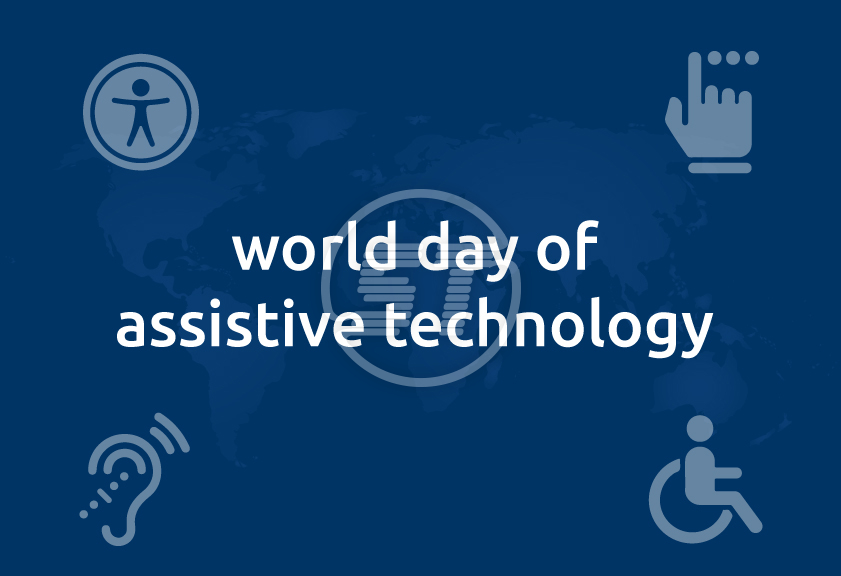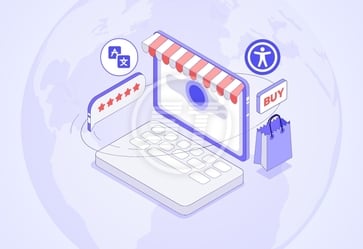If a user tries to browse a website, shop online, or read a company blog without being able to see the screen, use a mouse, or hear the video – what sort of experience it will be for them? Ironically, a huge segment of people with disabilities encounters such issues every now and then while they explore digital content.
As we mark World Day of Assistive Technology (June 4), it’s time for businesses to reflect on a simple yet powerful question: “What is the accessibility level of their digital presence?”
What is World Day of Assistive Technology and why it matters?
The first World Day of Assistive Technology happened on June 4, 2024. The idea behind observing this day is to raise awareness about the importance of assistive technologies and advocate for affordability and universal accessibility to these tools. Since assistive technology usage is still not impressive in many low and middle-income countries.
The day is expected to:
- Promote equity and empowerment and help focus various disparities.
- Encourage innovation thereby less expensive assistive technologies can be made for people with disabilities.
- Engage governments, businesses, and communities to prioritize and invest in accessibility infrastructure.
- Celebrate the positive impact of assistive technologies on the lives of people with disabilities.
What is digital accessibility and why should businesses care about it – especially today?
Digital accessibility refers to designing websites, mobile apps, digital tools, and documents such a way that people of all abilities can perceive, navigate, and interact with them. This includes individuals with:
- Vision impairments
- Motor disabilities
- Hearing loss
- Cognitive or learning disorders
Digital accessibility is often guided by international standards like the Web Content Accessibility Guidelines (WCAG) developed by the World Wide Web Consortium (W3C).
And the reasons why businesses should focus on their digital assets’ accessibility:
- It’s a growing facet that can’t be ignored
The number of disabled users across the world is massive. Over 1.3 billion people globally live with some or the other sort of disability and if their family and caregivers are included, they influence over $13 trillion (approx.) in annual disposable income.
Businesses that ignore accessibility are literally shutting the door on a significant and loyal customer base.
Assistive technology users might choose competitors’ devices to complete their digital transactions if a business won’t be able to offer them seamless digital experience.
- It’s the law and it is being enforced
Yes, it’s true that accessibility is a best web practice. But it’s a legal requirement also in many countries and violations can lead to lawsuits, hefty settlements, and public backlash.
- In the U.S., ADA Title III lawsuits for inaccessible websites are on the rise. Thus, websites ought to comply with ADA and Section 508 for that matter.
- In the EU, the European Accessibility Act mandates accessible digital products and services.
- In India, the RPWD Act 2016 enforces accessibility in both public and private sectors.
On World Day of Assistive Technology, the spotlight is on the issues about availability and usage of assistive technologies tools. It’s a great time for businesses to assess whether they’re on the right side of the law or need improvements.
- Innovation starts with inclusion
Some of the greatest tech innovations – voice assistants, closed captions, touchscreens – originated as assistive technologies.
By designing for accessibility, businesses often discover better, more intuitive user experiences for everyone:
- Keyboard shortcuts benefit not only users with motor impairments but also others using only keyboards.
- High-contrast modes help mobile users in bright sunlight.
- Captions help not just the deaf community, but also people watching videos on mute.
Accessibility leads to universal usability, which is a sign of great design.
- A stronger brand, a deeper impact
In modern scenario, consumers appreciate a brand supporting some noble cause. Accessibility shows that a business values diversity, empathy, and innovation.
Celebrating World Day of Assistive Technology by fine-tuning digital accessibility can:
- Strengthen brand trust and customer loyalty.
- Improve reputation with investors, partners, and regulators.
- Signal leadership in ESG (Environmental, Social, and Governance) Performance.
More than ever, people want to support businesses that care about inclusion and equality – not just in words, but in action.
How can businesses start making a difference?
World Day of Assistive Technology is a perfect time to endeavor in right direction. Businesses can take some immediate steps:
- Audit digital assets
Use tools like Website Accessibility Checker, Axe, WAVE, or Lighthouse to identify basic accessibility issues. Consider a professional WCAG audit for precise insights.
- Involve people with disabilities
If possible, include individuals with disabilities in user testing to understand their real pain-points and challenges they encounter frequently.
- Train all teams
Educate designers, developers, marketers, and content creators about accessibility best practices (if not all then some basic).
- Support assistive tech compatibility
Ensure that the business websites and apps work smoothly with screen readers, keyboard navigation, voice control, and alternative input devices.
- Make accessibility a core value
Embed accessibility into the product roadmap, brand values, and company policies.
Read this interesting topic: Best Practices for Cognitive Accessibility
Accessibility is an opportunity, and this day brings a call to action for businesses!
On World Day of Assistive Technology, we’re reminded that the digital world should be for everyone – not just the tech-savvy, the able-bodied, or the majority.
Businesses that understand this fact aren’t just doing the right thing – they’re future-proofing their brand, expanding their reach, and building a more equitable world by making their digital assets compatible for assistive technologies.
So, the real question isn’t “Why should we care about digital accessibility?”
It is “Why wouldn’t we?”
Ready to create a more inclusive digital experience? At Skynet Technologies, we believe accessibility is more than a requirement — it’s a commitment to serving every user with dignity and ease. This World Day of Assistive Technology, take a proactive step towards making your website accessible to all. Connect with our experts to explore tailored digital accessibility solutions that meet global standards and enhance user experience for everyone.


